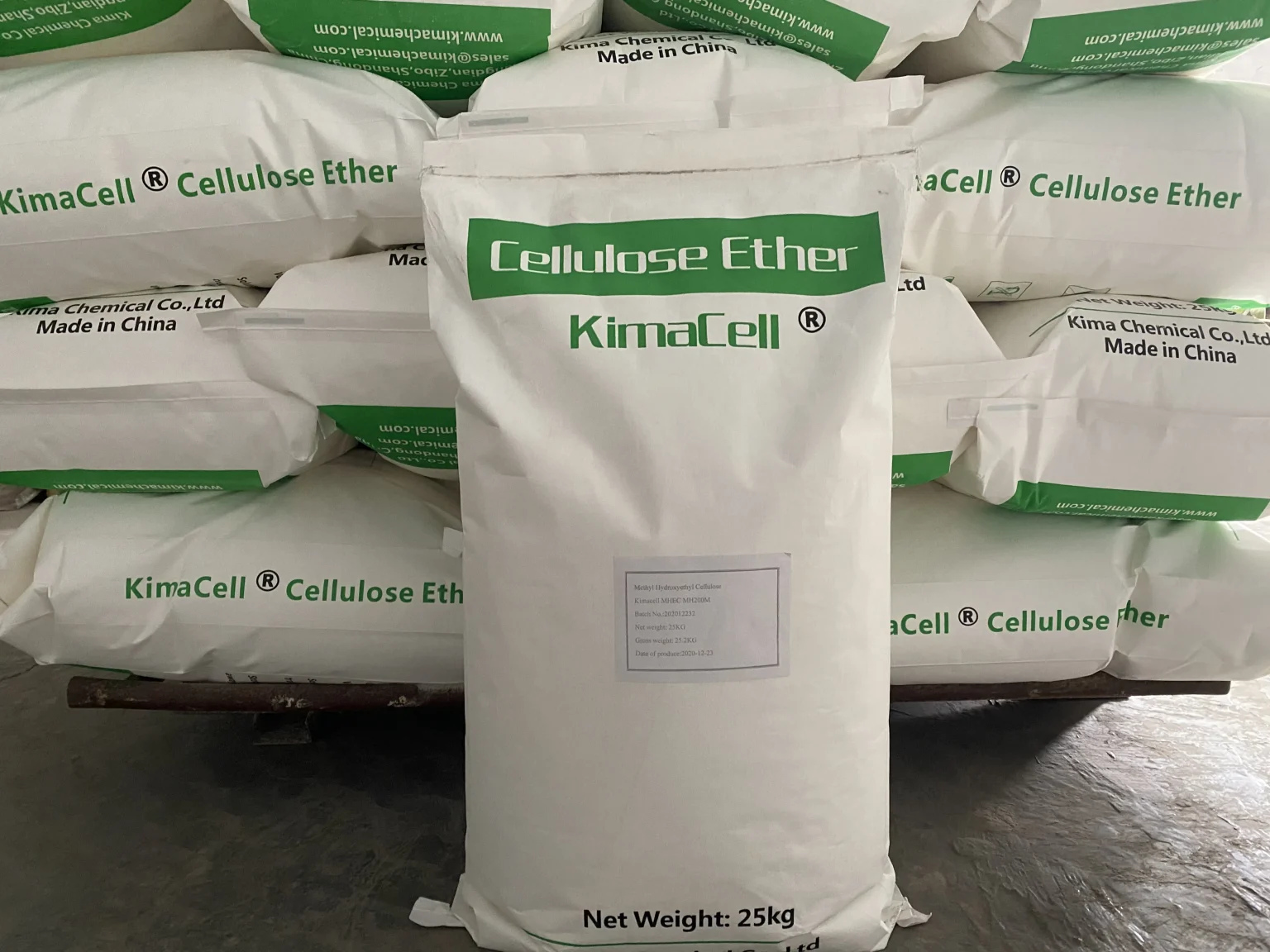Introduction
In the construction industry, the performance of mortar plays a vital role in ensuring the durability and efficiency of building projects. One crucial ingredient that significantly enhances mortar performance is Methyl Hydroxyethyl Cellulose. Known for its exceptional water retention, thickening, and workability improvement properties, Methyl Hydroxyethyl Cellulose is widely used in various dry mix mortar formulations. At KIMA CHEMICAL CO., LTD, we specialize in producing high-quality Methyl Hydroxyethyl Cellulose that helps extend mortar open time, making construction work more manageable and precise.
What is Methyl Hydroxyethyl Cellulose?
Methyl Hydroxyethyl Cellulose is a non-ionic cellulose ether derived from natural cellulose. Through chemical modification, it gains properties that make it soluble in water and highly effective as a thickener and stabilizer. This compound is commonly used in cement-based mortars, tile adhesives, plasters, and other dry mix products. Its ability to control water evaporation makes Methyl Hydroxyethyl Cellulose an indispensable additive in modern construction materials.
The Role of Methyl Hydroxyethyl Cellulose in Mortars
The main function of Methyl Hydroxyethyl Cellulose in mortar is to retain water for a longer period, preventing premature drying. This water retention ability ensures that cement particles have enough time for complete hydration, which directly improves bonding strength and workability. By incorporating Methyl Hydroxyethyl Cellulose, mortar mixes can achieve a longer open time, allowing builders to make adjustments without worrying about reduced adhesion. Furthermore, Methyl Hydroxyethyl Cellulose helps maintain consistency, preventing segregation and sagging during application.
How Methyl Hydroxyethyl Cellulose Extends Open Time
When Methyl Hydroxyethyl Cellulose is added to mortar, it forms a protective film around cement particles. This film slows down water evaporation, even in hot or windy conditions. As a result, workers have more time to place tiles, bricks, or stones accurately. The extended open time provided by Methyl Hydroxyethyl Cellulose ensures that the mortar remains workable without compromising its final strength. This property is especially valuable in large-scale projects where precise alignment and finishing are essential.
Advantages of Using Methyl Hydroxyethyl Cellulose in Mortar
The use of Methyl Hydroxyethyl Cellulose offers several benefits:
- Enhanced Workability – Mortar becomes smoother and easier to apply.
- Extended Open Time – Gives workers more time for adjustments.
- Improved Water Retention – Prevents premature drying.
- Better Adhesion – Ensures strong bonding between surfaces.
- Reduced Sagging – Keeps mortar in place on vertical surfaces.
By incorporating Methyl Hydroxyethyl Cellulose, construction teams can work more efficiently, reduce material waste, and achieve high-quality finishes.
Applications of Methyl Hydroxyethyl Cellulose in the Construction Industry
Methyl Hydroxyethyl Cellulose is used in a wide range of construction materials:
- Tile Adhesives – Improves bonding strength and prevents sliding.
- Plasters and Renders – Enhances spreadability and finish quality.
- Cement-Based Mortars – Extends open time for easier application.
- Self-Leveling Compounds – Provides smooth flow and prevents segregation.
- EIFS (External Insulation Finishing Systems) – Maintains stability and prevents cracks.
Whether for residential, commercial, or industrial projects, Methyl Hydroxyethyl Cellulose ensures reliable and consistent results.
Why Choose KIMA CHEMICAL CO., LTD for Methyl Hydroxyethyl Cellulose
At KIMA CHEMICAL CO., LTD, we manufacture Methyl Hydroxyethyl Cellulose with strict quality control to guarantee consistency in performance. Our products are tailored to meet the specific requirements of different mortar formulations. We focus on producing cellulose ethers with optimal viscosity, water retention, and thickening properties to maximize mortar efficiency. By choosing KIMA CHEMICAL CO., LTD, customers benefit from expert technical support, competitive pricing, and reliable supply.
Factors to Consider When Using Methyl Hydroxyethyl Cellulose
To maximize the benefits of Methyl Hydroxyethyl Cellulose, it is essential to choose the correct grade for your application. Factors such as viscosity, substitution degree, and particle size can impact performance. Mixing procedures also matter; Methyl Hydroxyethyl Cellulose should be dispersed evenly in dry materials before adding water to ensure proper hydration and full efficiency. Understanding these parameters helps achieve the desired open time and workability.
Future Trends in Methyl Hydroxyethyl Cellulose Applications
As the construction industry continues to innovate, demand for high-performance additives like Methyl Hydroxyethyl Cellulose is expected to grow. Sustainable building practices, energy-efficient systems, and advanced mortars will increasingly rely on cellulose ethers for improved functionality. Research is also focusing on enhancing the environmental profile of Methyl Hydroxyethyl Cellulose, making it an even more attractive choice for eco-conscious projects.
Conclusion
Methyl Hydroxyethyl Cellulose plays a critical role in extending the open time of mortars, ensuring better workability, adhesion, and durability in construction projects. Its water retention, thickening, and stabilization properties make it an essential additive for tile adhesives, plasters, renders, and other cement-based products. At KIMA CHEMICAL CO., LTD, we are committed to providing top-quality Methyl Hydroxyethyl Cellulose to help construction professionals achieve superior results with efficiency and precision. By choosing the right formulation and supplier, builders can maximize the benefits of Methyl Hydroxyethyl Cellulose, ensuring high-performance mortars that meet the demands of modern construction.










